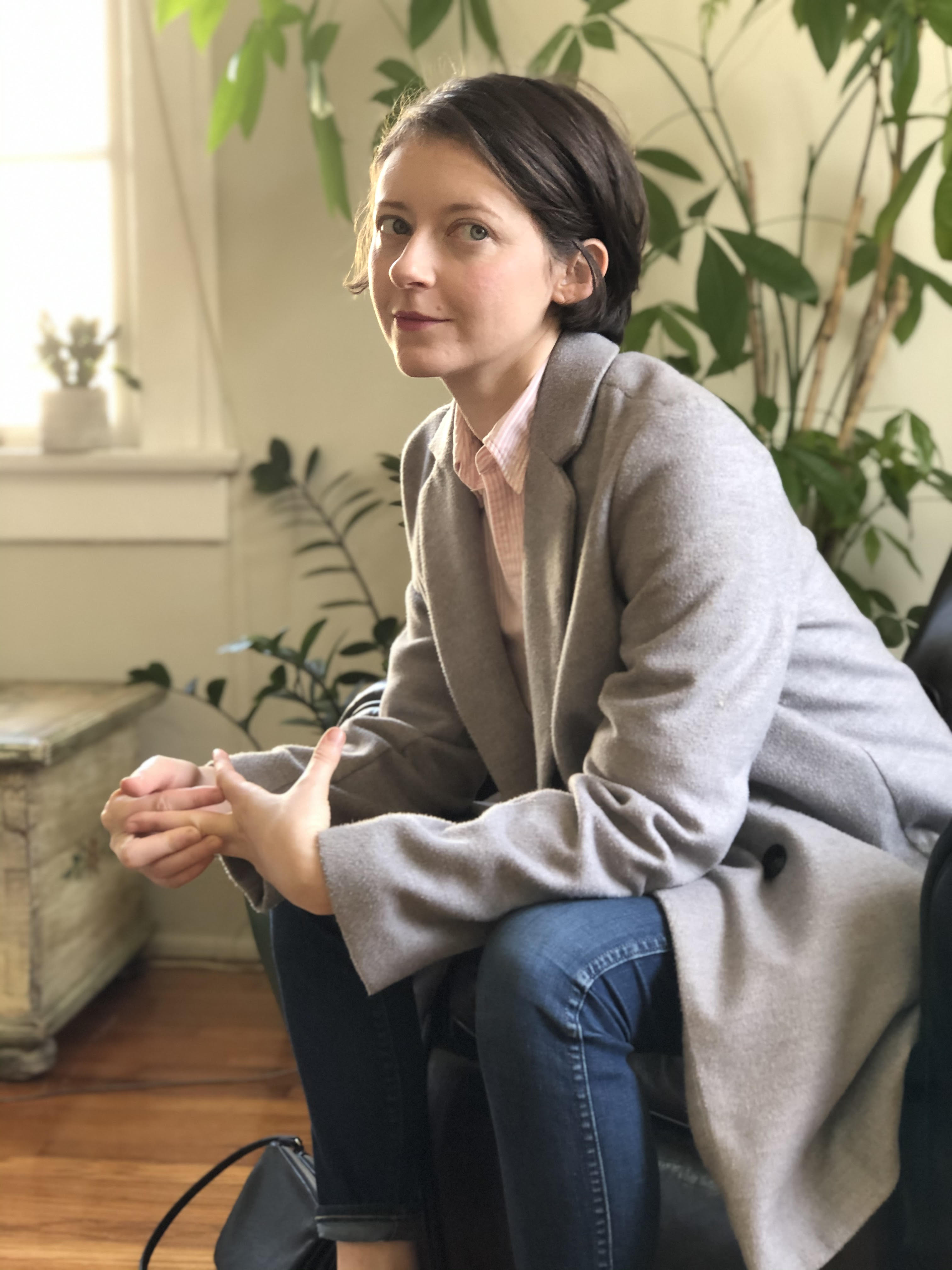How to Reduce Screen Time for Kids
Imagine this scenario: it’s a Tuesday morning and you’re trying to get your second-grade son out the door to school, but everything has been going wrong — the backpack is missing, you’re scrambling to pack a lunch that you forgot to make the night before, and you just learned that there is a “due today” field trip form that you need to attend to. As you scramble to keep track of all the details, your four-year-old daughter is clinging to your leg, desiring attention after being up since the crack of dawn. You spot your iPad on the couch — maybe an electronic game would distract your little barnacle for the few minutes you need to get your son organized and ready to catch the bus?
If you chose to employ the iPad, we wouldn’t blame you — parenting is tough and we need all the resources we can get in order to keep our kids safe, healthy, and relatively content. But we also know that nagging feeling that comes with the iPad — should I or shouldn’t I? Didn’t I read an article recently that talked about how detrimental screens are for kids and their mental health? But what does that journalist expect you to do when there’s a minor crisis and you need four extra hands?
Ultimately, kids in families that cultivate warmth and love are going to be just fine. So give yourself a little grace, dear Sparkle Parent! But in the interest of living our best lives with integrity, we invite you to delve into the research with us and explore ways to arrange your life so that you can enjoy screens (or not) in accordance with your own principles.
Is Screen Time Really That Bad?
"Screen Free" and "Screen Light" are relatively new phrases to the modern family lexicon. Before phones, watches, cars, and music players all added screens to the interface, a screen was located in a particular place and used at a particular time. Now that they are everywhere we go, families are deciding how much "screen time" is appropriate. And these considerations are important. This is especially true considering that half of all children have their own dedicated smartphone, tablet, or device before the age of 11.
So what are the impacts of screen time? Is it really all that bad? Digging into the facts sometimes results in mixed messages. In one recent study, researchers discovered some potentially harmful impacts of screen time exposure. Children spending seven or more hours per day on screens had thinning in the area of the brain responsible for reasoning and critical thinking
But what about moderate use of screens?
In one study, researchers examined the link between screen time and children's physical and mental well-being. Over 12,000 children were included in this study and it is the most comprehensive research on children and screen use that’s been conducted to date. The results? Higher rates of screen use were associated with slightly poorer outcomes for many measures, but the differences were relatively small.
In addition to this, moderate screen use is actually associated with some more positive outcomes, such as close friendships among peers. So what can we take away as parents? The fact is, we are still learning and studying. To build healthy habits, parents may do well to combine what they can glean from current research with their own intuition. We all have observations into our own children’s unique dispositions and that can be a good jumping-off point for how we approach the screen time question.
When Is Screen Time Okay (or Even Good)?
As parents, it's perfectly natural to wonder how screen time may affect development, and strive to be intentional with how we use (or don’t use) it. At the same time, falling into the trap of guilt or shame will likely only create more problems. How can we avoid this trap? It may help to consider how and why we are sometimes drawn to using screens (and how we may replace it if that makes sense for us).
There is an approach created by philosopher Marshall McLuhan that can be helpful to maintain balance and perspective when navigating what healthy or appropriate media consumption may look like. He makes a distinction between “hot” and “cool” media — hot media requires less conscious participation than cool media.
Video and other screen-based media is definitely in the “hot” category. And sometimes this can be a gift! Watching a video or movie can be a great solution, for example, when struggling through an uncomfortable illness. Sometimes we may need something to ease our bodies' awareness of discomfort. But most of the time, we hope to create an environment in which kids are engaged with the world. We look to build habits and routines that cultivate a sense of joy and discovery. Many parents find this kind of engagement with life to be a lot harder during and after screen time.
Why Should We Limit Screen Time?
Maybe your desire is less to totally eliminate screens and more to enhance your little ones' childhoods. This is true for many parents. We are interested in how to prioritize “real life” activities and connections. How do we do this? It can help to create opportunities for children to move, experience moments in nature, learn through outdoor play, and cultivate social interaction and connection.
This comes with its own set of challenges.
Parents are constantly faced with a dilemma. How do we balance the demands of a fast-paced and grueling world with the equally fast-paced demands of parenting? So often, increases in screen time are more a result of necessity than a choice of convenience or preference. Screens are often serving a specific purpose!
Sometimes parents simply need alternate tools and methods to keep kids engaged. Ideally, those methods will also support and encourage children’s creativity, imagination, and development. Here’s where “cool media” options enter the picture.
Using Audio Stories to Reduce Screen Time
What then are the “cool media” options? One helpful insight comes from our own literary editor, Ann Boyd. Ann actually joined our community as a Sparkle listener before becoming a team member. “I loved Sparkle Stories as a ‘cooler media option’,” Ann shares, “something that connected with my kids deeply on a story level, but also allowed for their own creative response. I found that my unspoken dreams of parenting and education aligned quite closely with a lot of the pictures painted in Sparkle Stories — families with kind words, openness to emotion, slow rhythms, a curiosity for learning, and deep respect for others and for the natural world.”
In fact, Sparkle Stories was created with this in mind. We want our stories to help the world go a little bit slower and be a little bit kinder. This is why all our stories are audio-only. Often we have observed that when a child listens to a story — simply told, without the extra stimulation of sound effects or visual images on a screen — they become still, silent, and completely focused. Their focus, however, is not on the storyteller, but inward on the images of the story itself. Keep reading for more about using audio stories and other approaches below.
Other Cool Media Possibilities
What other kinds of cool media can captivate your child’s attention? Since you know your child best, you’re probably the expert on this question. But if you need some prompting, here are a few ways to watch for cool media options that your young one might love:
- What books does your child enjoy? Even if they are pre-readers, they may be able to spend a few minutes happily paging through picture books.
- Does your child enjoy drawing? Lay out a stack of papers and a set of fresh crayons or colored pencils with a suggestion to draw something they find outside in nature.
- Music can be captivating to children. Turn on some kid-friendly tunes while offering an age-appropriate jigsaw puzzle or set of blocks for building.
- It’s clear to many, but do not underestimate the magic of Legos!
- And if you look on the Sparkle Blog, you’ll find dozens of fun crafts and projects that are associated with stories and can support your child’s creative impulses.
A Lifestyle to Support Growing Minds
The trick with “cool media” is that it doesn’t absorb a little mind as completely in its content. This is a bonus when you’re hoping to create space for children to engage with the world, but less ideal when what you really need is ten minutes of silence.
Let us say it again — we certainly won’t judge you for turning on a show when you’ve discovered that Fido’s house-training has gone awry and you need some undistracted space to clean up the mess. Everyone needs an emergency help button, and often screens can be a godsend in this kind of moment!
But we know from experience that reducing screen time often needs to go hand-in-hand with a slower lifestyle. In order to cultivate opportunities for cool media engagement and allow for the interruptions that come when Junior is finished with coloring and just needs a walk to the park, parents need at least one of two things: 1) flexibility around tasks and 2) help from other adults.
So we invite you to look for moments to slow down. Watch the growing grass with your kiddo, even when there are piles of laundry to be folded. Ask for help when you need a break or when your boss is breathing down your neck about a deadline. We’re all just humans doing the best that we can, so take care of yourself in order to take care of your sweet kiddos as well!
Ideas to Limit Screen Time
Now that we’ve reviewed some of the factors, does reducing or eliminating screen time sound like something that’s right for your family? If so, we can help! We’ve gathered plenty of resources to help families achieve healthier screen time habits. You can explore some of them below.
Sparkle Stories
As we mentioned above, audio stories offer a great tool and resources when it comes to reducing or eliminating screen time. And Sparkle Stories has a library of over 1400+ original audio stories to choose from! Not only are the stories entertaining, but they are also created with children’s developmental stages and needs in mind. On top of that, each story contains a lesson or seed of learning.
One of the best parts of using audio-only stories to replace screen time for children is that the story is only the beginning. Children’s imaginations are free to construct and imagine the world in which the story takes place. Furthermore, their hands and eyes are free to move and create. Most of our stories are linked to an associated craft, project, recipe, or tutorial. This makes it easy for the experience to continue to inspire moments of creativity, connection, and play long after the audio itself ends.
“I’ve always thought – and still do – that our time is best spent connecting to others, creating things, or being outdoors,” our CEO and Sparkle Founder Lisabeth Sewell says. “We evolved over 200,000 years moving our bodies, relating to each other, building and creating things while being outside in nature – and so that’s how I think we’re healthiest, when we continue to do these things.”
The fact is — we at Sparkle Stories invest in this work because we believe it makes a difference. Audio stories are a great start to reducing (or even eliminating) screen time, and our staff have seen the magic of Sparkle transform their own family’s engagement with screens. Sparkle Stories has so many original audio stories to choose from (over 1400), and it’s easy to search by age, season, or topic. Would you like to give it a try? You can start a 10 day free trial today.
Tips to Get Kids off Screens
What does it mean to successfully reduce or eliminate screen time? There's not a cookie cutter answer. Your existing patterns, habits, and challenges may vary, and of course every child’s unique personality. The truth is that each family is different. It can help to create a strong game plan for screen alternatives that your own family will enjoy. We asked the Sparkle team what suggestions they might have for how to get their children to take a screen break. You can read them here . Try answering each of the questions from this post for your own family.
Reading Aloud
Simply making time to read aloud to children can be amazingly impactful to development, bonding, and growth. Beyond that, it can also be a great option for replacing some screen time. You can try reading aloud to kids during mealtimes — breakfast, during lunch, during snacks. Another great time is before naps, and also just for fun.
When little ones start to get restless in an activity, it can also be a great option to listen to a Sparkle Story while you work on something creative together — drawing or blocks or Legos.
Explore: Get Out and About!
To cultivate curiosity, make time to get out in the world! Whether you plan a full-on field trip to a museum or the zoo or just a short walk to a local park, outings can be well worth the effort. And these adventures don’t have to take you far. Sometimes it simply takes a moment's pause – and an encouragement to find fresh eyes – to see that there's a world of things to explore right around you. We’ve got plenty of tips and stories for exploring — whether it’s a national park or just your own backyard.
Try a Token System
Our literary editor, Ann Boyd, shares a strategy that her own family experimented with:
*When our kids were in elementary school, we tried a token system for self-regulation. Each child began the week with ten tokens. One token could be redeemed for 30 minutes of screen time. Or, if the child spent 30 minutes reading, they could earn a token. At the end of the week, any tokens could be converted to cash at the rate of $.50 per token. (I think I originally read about this strategy in an anecdote from Greg McKeown’s book Essentialism.)
There were some nice things about this system — it definitely encouraged self-regulation for screen time, it promoted reading, and it gave them a way to delay instant gratification for the sake of future benefit. But I didn’t really love the way this system monetized screen time and reading time. I’d rather have kids read because they felt like reading instead of reading so that they can earn a treat. It didn’t really match up with my philosophy, but there were some practical benefits. I did love the way I was no longer routinely badgered for screen time — I could always just ask about their tokens.
55 Things to Do Instead of Screens
When kids are away from screens, they are free to explore other things — nature, social connections, and making things with their hands to name just a few. We’ve compiled a list of fun and satisfying things families can do in a day on the Sparkle Blog. Explore the world of possibilities outside of screens!
Are you inspired? Listen free for 10 days
If you’ve gotten this far in the article, we’re guessing you’re looking for some fresh ways to shake up your family’s screen time rhythms. Would you like to try Sparkle Stories? You can find some sample stories here, and sign up for 10 days of free unlimited listening here. Have questions for us about our service? We’d love to connect with you. Please reach out to us at info@sparklestories.com.
About the Authors

Jessica Pounds
Jessica is a content creator, writer, strategist, and vintage pyrex collector. She has a passion for facilitating authentic connection, whether that's through her work at Sparkle Stories or her songwriting.

Ann Boyd
Ann is a writer, editor, homeschooling mother, voracious reader, full-fat baker, and musician. She lives in Chicago with her husband and two daughters and chronicles the journey at Boyds’ Nest News.

Lisabeth Sewell
Lisabeth Sewell has worn many hats at Sparkle over the years, from Sparkle Kitchen Blogger to Editorial Director to Doer of All Odd Jobs. Her primary role is as CEO.

